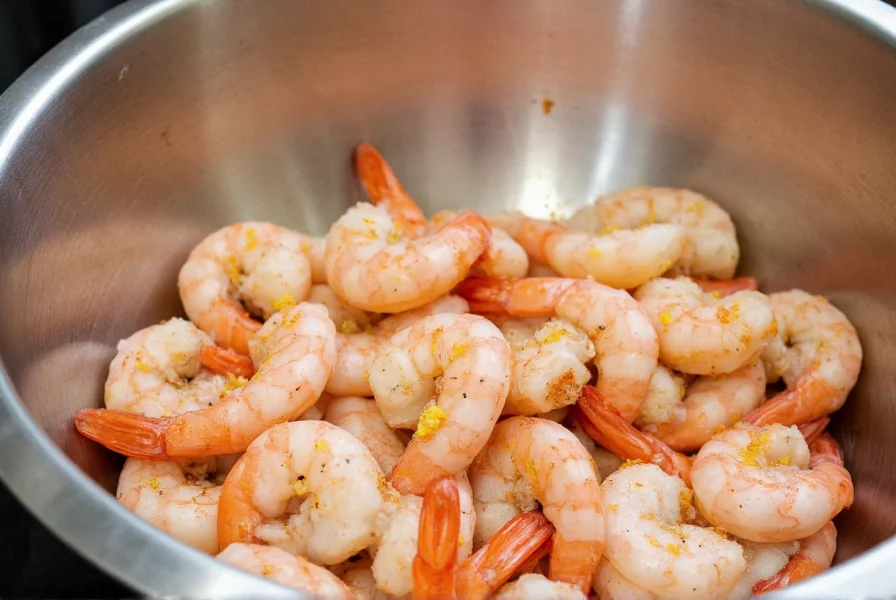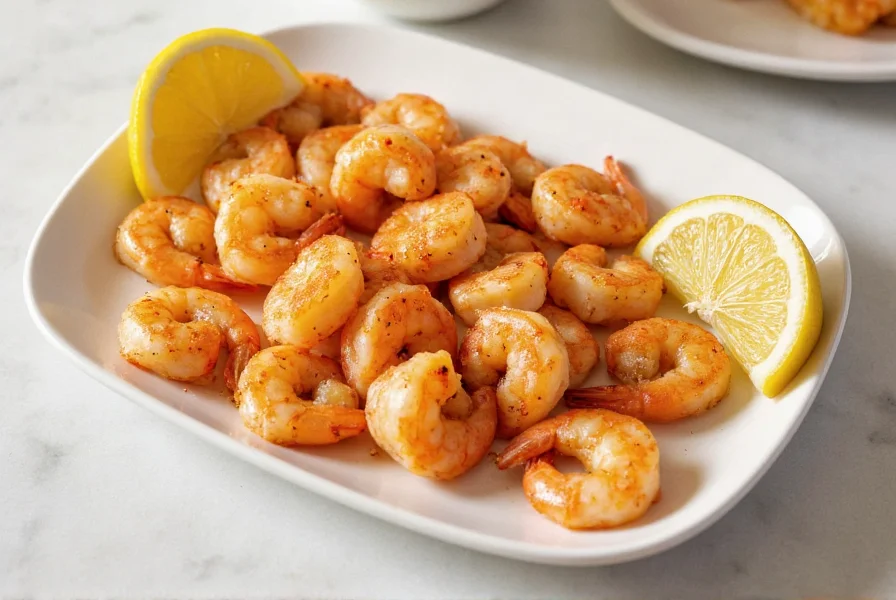Creating restaurant-quality lemon pepper shrimp at home requires understanding the delicate balance between citrus brightness and peppery warmth. This versatile seafood dish has gained popularity for its simplicity and bold flavors that satisfy without overwhelming the natural sweetness of shrimp. Whether you're a beginner cook or an experienced home chef, mastering this preparation technique opens doors to countless meal possibilities.
Essential Ingredients for Perfect Lemon Pepper Shrimp
The magic of this dish lies in its simplicity. High-quality ingredients make all the difference when working with minimal components. For the best results when making easy lemon pepper shrimp recipe, select these key elements:
| Ingredient | Quantity | Why It Matters |
|---|---|---|
| Large shrimp (31-40 count) | 1 pound, peeled and deveined | Larger shrimp hold up better during cooking and provide optimal texture |
| Fresh lemon zest and juice | Zest of 1 lemon, 2 tbsp juice | Bright citrus notes without bitterness of bottled juice |
| Freshly cracked black pepper | 1½ tsp coarse grind | Essential for authentic lemon pepper flavor profile |
| Garlic | 2 cloves, minced | Provides aromatic depth without overpowering |
| Olive oil or butter | 2 tbsp | Creates perfect sear and carries flavors |
Avoid pre-made lemon pepper seasoning blends if you want to create the best homemade lemon pepper shrimp. These often contain salt, fillers, and anti-caking agents that compromise flavor. Instead, freshly cracked Tellicherry pepper and organic lemon provide superior taste and control over sodium content.

Step-by-Step Preparation Guide
Follow these professional techniques for consistently perfect results when preparing your quick lemon pepper shrimp dinner:
- Prep the shrimp: Pat shrimp completely dry with paper towels—moisture prevents proper searing
- Create the seasoning: Combine lemon zest, freshly cracked pepper, garlic, ½ tsp salt, and a pinch of red pepper flakes
- Season: Toss shrimp with seasoning mixture and let sit 5-10 minutes at room temperature
- Heat the pan: Use stainless steel or cast iron over medium-high heat with oil until shimmering
- Cook: Arrange shrimp in single layer without crowding; cook 1½-2 minutes per side until opaque
- Finish: Remove from heat, add lemon juice, and toss to combine
The critical timing element in this 15-minute lemon pepper shrimp recipe is avoiding overcooking. Shrimp cook extremely quickly and become rubbery when heated beyond 120°F internal temperature. Remove them from the pan just as they turn opaque, as carryover cooking will continue the process.
Cooking Techniques for Optimal Results
Professional chefs employ specific methods to achieve the perfect texture and flavor balance in restaurant-style lemon pepper shrimp:
- Dry brine technique: Toss shrimp with ¼ tsp kosher salt 15 minutes before cooking to improve moisture retention
- Temperature control: Keep shrimp chilled until ready to cook to prevent premature cooking
- Pan selection: Use heavy-bottomed pans for even heat distribution and better sear
- No overcrowding: Cook in batches if necessary to maintain proper pan temperature
- Finishing touch: Add cold butter at the end for a silky sauce that clings to the shrimp
For those exploring grilled lemon pepper shrimp variations, thread shrimp onto skewers after marinating. Grill over medium-high heat for 2-3 minutes per side, basting with reserved marinade during the first minute of cooking only.

Serving Suggestions and Pairings
Lemon pepper shrimp's versatility makes it suitable for various meal formats. Consider these complementary pairings for your flavorful lemon pepper shrimp dish:
- With grains: Serve over quinoa, couscous, or orzo with fresh herbs
- As pasta: Toss with linguine, olive oil, and additional lemon zest
- Salad base: Arrange over arugula with shaved Parmesan and cherry tomatoes
- Appetizer style: Skewer with lemon slices for elegant hors d'oeuvres
- With vegetables: Pair with roasted asparagus or grilled zucchini
For meal prep enthusiasts creating healthy lemon pepper shrimp lunches, store components separately and combine when ready to eat. The acid in lemon juice will continue to "cook" the shrimp if left in contact too long, resulting in ceviche-like texture.
Troubleshooting Common Issues
Even simple recipes encounter challenges. Here's how to solve frequent problems with your easy lemon pepper shrimp preparation:
- Watery shrimp: Always pat dry thoroughly before seasoning—moisture prevents proper searing
- Bitter flavor: Use only lemon zest (no white pith) and fresh juice (not bottled)
- Overcooked shrimp: Remove from heat when 80% opaque—they'll finish cooking off-heat
- Uneven seasoning: Toss shrimp in seasoning mixture rather than sprinkling on top
- Sticking to pan: Ensure pan is properly preheated before adding oil and shrimp
Frequently Asked Questions
How long should I cook lemon pepper shrimp?
Cook lemon pepper shrimp for 1½-2 minutes per side in a hot pan. The total cooking time should not exceed 4 minutes. Shrimp are done when they turn opaque and form a loose "C" shape. Overcooking causes them to become tough and rubbery.
Can I use frozen shrimp for lemon pepper shrimp?
Yes, but proper thawing is essential. Place frozen shrimp in a sealed bag and submerge in cold water for 15-20 minutes. Never use warm water as it partially cooks the shrimp. Pat thoroughly dry before seasoning, as frozen shrimp contain more moisture that prevents proper searing.
What's the difference between lemon pepper shrimp and lemon garlic shrimp?
Lemon pepper shrimp emphasizes the citrus and peppercorn combination as the primary flavor profile, while lemon garlic shrimp focuses on garlic as the dominant flavor with lemon as a supporting note. Authentic lemon pepper seasoning contains coarsely ground black, white, and sometimes pink peppercorns along with lemon zest, creating a more complex flavor than simple lemon-garlic preparations.
How can I make lemon pepper shrimp without alcohol?
Most traditional lemon pepper shrimp recipes don't require alcohol. For depth of flavor without wine, try adding 1 tablespoon of white wine vinegar or extra lemon juice at the end of cooking. Alternatively, a splash of low-sodium vegetable broth can provide complexity while keeping the dish alcohol-free.











 浙公网安备
33010002000092号
浙公网安备
33010002000092号 浙B2-20120091-4
浙B2-20120091-4